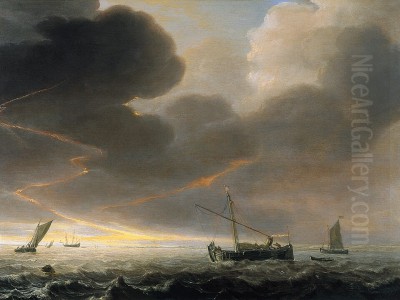
Simon de Vlieger stands as a pivotal figure in the rich tapestry of Dutch Golden Age painting. Active during the first half of the seventeenth century, he earned renown primarily as a marine painter, capturing the multifaceted relationship between the Dutch people and the sea that surrounded and sustained them. His canvases depict bustling harbors, tranquil estuaries, dramatic shipwrecks, and vast expanses of water under changing skies, all rendered with a sensitivity to light and atmosphere that marked a significant evolution in the genre. His influence extended beyond his own prolific output, shaping the next generation of marine artists, including some of the most celebrated names in Dutch art history.
Early Life and Artistic Formation
Born around 1601 in Rotterdam, a city whose identity was inextricably linked to maritime trade and activity, Simon Jacobsz de Vlieger entered a world where the sea was a dominant force in daily life, commerce, and national identity. While concrete details about his earliest training remain scarce, the stylistic qualities of his initial works strongly suggest the influence of Jan Porcellis. Porcellis was a leading marine painter of the slightly older generation, known for pioneering a more tonal and atmospheric approach, moving away from the colourful, detailed, and often crowded compositions of earlier marine specialists like Hendrick Cornelisz Vroom.
De Vlieger's early paintings, often characterized by a limited, near-monochromatic palette dominated by grays, silvers, and subtle browns, echo Porcellis's emphasis on capturing mood and the effects of weather and light over meticulous detail. This "tonal phase" focused on the vastness of the sea and sky, often depicting ships as relatively small elements within a larger, atmospheric composition. This approach represented a significant shift towards greater naturalism and subtlety in marine painting.
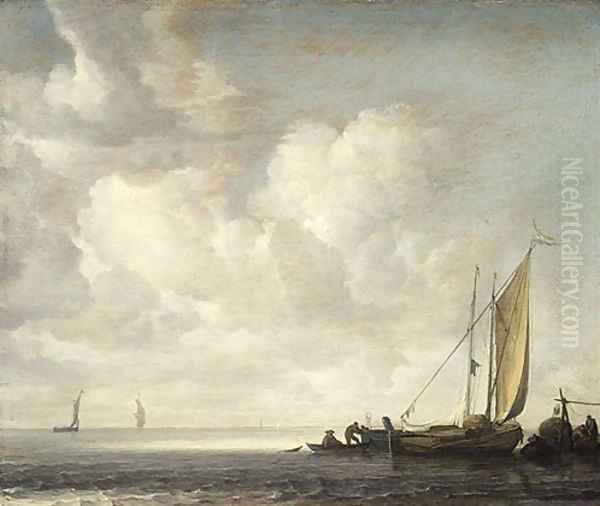
His career path saw him move between several important Dutch artistic centers. Records indicate his presence in Delft, where he joined the Guild of Saint Luke in 1634, a crucial step for any professional artist seeking commissions and the right to train apprentices. His marriage to Anna Gerritsd van Willige likely occurred around this period. By 1638, he had relocated to Amsterdam, the thriving commercial and artistic heart of the Dutch Republic. His time in Amsterdam, lasting until about 1648, was highly productive and likely exposed him to a wider range of patrons and artistic currents. Later, he spent time in Dordrecht before finally settling in Weesp, a smaller town near Amsterdam, where he remained until his death.
Evolution of Style: Light, Color, and Detail
While the influence of Jan Porcellis is evident in his early work, Simon de Vlieger did not remain static stylistically. Throughout the 1630s and increasingly in the 1640s, his approach evolved. He gradually moved away from the strict limitations of the tonal palette, incorporating a richer, though still subtle, range of colors. Blues became more vibrant in his skies and waters, and warmer tones appeared in sails, flags, and coastal elements.
Crucially, De Vlieger developed an exceptional mastery of light. He became adept at rendering the play of sunlight breaking through clouds, reflecting off the water's surface, and illuminating the sails and hulls of ships. His ability to depict different times of day and weather conditions – the hazy light of dawn, the bright clarity of midday, the dramatic contrasts of stormy skies – became a hallmark of his mature style. This focus on luminosity brought a new level of realism and vibrancy to his seascapes.
Alongside this development in light and color, De Vlieger also began to incorporate more detail into his compositions, particularly in the rendering of ships. While maintaining a sense of atmospheric unity, his vessels became more substantial and accurately depicted, showcasing his keen observation of rigging, hull construction, and the way ships moved through water. His compositions often became more complex, utilizing diagonal arrangements of ships or coastlines to create a greater sense of depth and dynamism. He frequently employed atmospheric perspective, subtly muting the tones and details of distant elements to enhance the illusion of space.
Subject Matter: Beyond the Open Sea
Simon de Vlieger's reputation rests firmly on his marine paintings, which encompassed a wide variety of scenes. He painted tranquil views of ships anchored in calm estuaries or sailing gently under fair skies, capturing moments of peace and order on the water. These often feature low horizons, allowing for expansive, subtly rendered skies that dominate the composition.
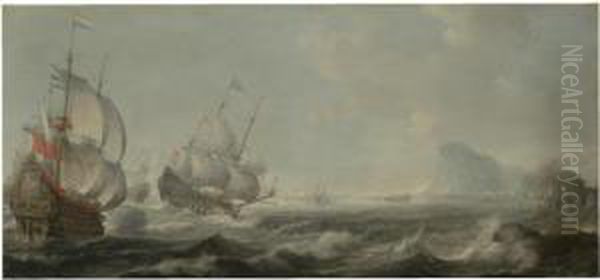
Conversely, he also depicted the sea's more dramatic aspects. Storms at sea, shipwrecks near rocky coasts, and naval engagements were subjects he returned to, showcasing his ability to convey movement, danger, and the power of nature. These works often feature dynamic compositions, crashing waves, and dramatic contrasts of light and shadow.
Beach scenes form another significant category within his oeuvre. These paintings typically depict the shoreline bustling with activity: fishermen hauling in nets or tending to their boats (known as pinken), elegantly dressed figures strolling along the sand, ships anchored offshore, and sometimes prominent coastal landmarks like lighthouses or dunes. These scenes provide fascinating glimpses into the daily life and social interactions occurring at the interface of land and sea in the seventeenth-century Netherlands. Examples include views of the beach at Scheveningen or Zandvoort.
While marine subjects dominated his output, De Vlieger was a versatile artist. He also produced pure landscapes, often depicting wooded scenes with careful attention to foliage and light filtering through trees. Furthermore, he was a skilled etcher, creating prints that included not only marine and landscape subjects but also architectural studies, such as his depiction of Roman Ruins and an Inn. This diversity demonstrates a broad artistic curiosity beyond his primary specialization.
Representative Works
Several paintings stand out as particularly representative of Simon de Vlieger's skill and style.
Beach Scene at Zandvoort (or similar titles referring to beach scenes): Works depicting coastal activity are among his most celebrated. These paintings masterfully combine genre elements with landscape and seascape. We typically see a sandy foreground populated with figures – fishermen, merchants, onlookers – and beached or shallow-draft vessels. The composition often leads the eye diagonally towards the sea, where ships ride at anchor or sail towards the horizon. De Vlieger excels in rendering the textures of sand, water, and sky, and capturing the specific quality of light on the Dutch coast. The careful arrangement of figures, boats, and landmarks like distant lighthouses demonstrates his sophisticated understanding of perspective and spatial recession.
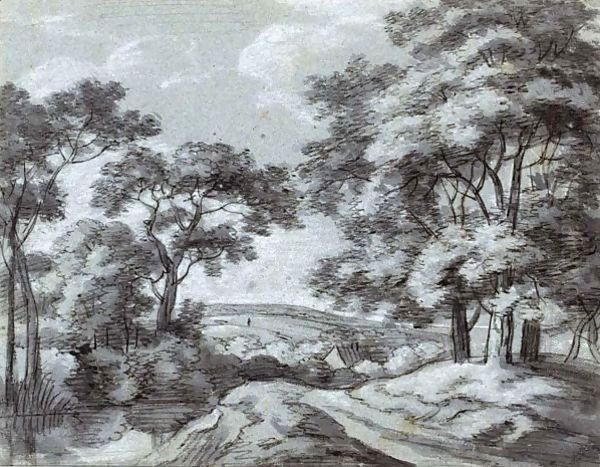
Calm Sea (c. 1640-1650): This work, and others like it, exemplifies De Vlieger's mature ability to render tranquility and luminous atmosphere. The sea is depicted as almost glassy, reflecting the subtle tones of the sky and the forms of the ships resting upon it. The composition is often simple and balanced, emphasizing the vastness of the water and the sky. The meticulous rendering of the ships, combined with the delicate handling of light and reflections, creates a scene of profound peace and stillness. These works showcase his departure from the purely tonal approach towards a more nuanced use of color and light.
The Battle of Gibraltar: De Vlieger also tackled historical subjects, including naval battles. His depiction of the Battle of Gibraltar (which occurred in 1607, long before he painted it, likely based on prints or descriptions) demonstrates his ability to handle complex, multi-figure compositions involving numerous ships engaged in combat. Such paintings required not only artistic skill in rendering smoke, fire, and the chaos of battle but also a degree of historical accuracy in depicting the vessels and flags involved. While perhaps less atmospheric than his calmer scenes, these works highlight his versatility and engagement with subjects of national importance. Other artists like Cornelis Verbeeck also depicted such scenes, but Vlieger brought his characteristic attention to light and water effects.
Wooded Landscape: Though less common than his seascapes, De Vlieger's landscapes demonstrate his skill in rendering terrestrial nature. These works often feature winding paths, rustic cottages, and carefully observed trees, with light playing a crucial role in defining form and creating atmosphere, much like in his marine paintings. They show his connection to the broader Dutch landscape tradition, which included artists like Jacob van Ruisdael (though Ruisdael was younger and also painted seascapes).
Workshop, Teaching, and Influence
Like many successful artists of his time, Simon de Vlieger likely maintained an active workshop where assistants might help with preparing materials or perhaps even contributing to larger commissions under his supervision. More significantly, he was an influential teacher, passing on his skills and stylistic innovations to the next generation.
His most famous pupil was undoubtedly Willem van de Velde the Younger. The younger Van de Velde, after initial training with his father, Willem van de Velde the Elder (himself a notable draftsman of marine subjects), spent approximately two years studying with De Vlieger around 1648-1650. This period was crucial for his development. He absorbed De Vlieger's sensitivity to light and atmosphere, his techniques for rendering water and skies, and his detailed knowledge of ship construction. Van de Velde the Younger would go on to become arguably the most celebrated Dutch marine painter of the later seventeenth century, building upon the foundations laid by his master.
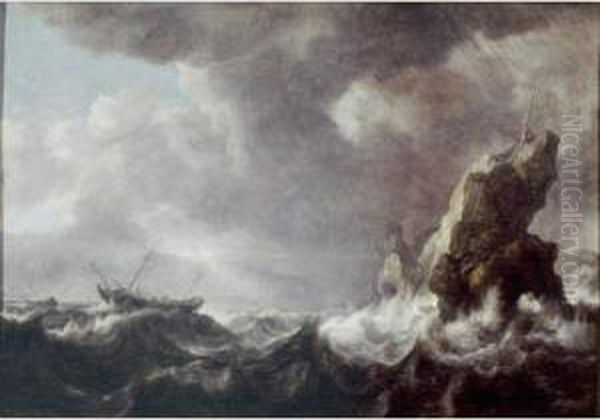
Other artists associated with De Vlieger or clearly influenced by him include Hendrick Dubbels, whose works from the early 1650s show a strong stylistic debt to De Vlieger, and Hendrick van der Blom. The wealthy Amsterdam merchant and accomplished marine painter Jan van de Capelle was not a direct pupil but was a great admirer and collector of De Vlieger's work. Van de Capelle owned numerous paintings and over 1,300 drawings by De Vlieger, and his own serene and light-filled marine paintings clearly show De Vlieger's profound influence, particularly in the rendering of calm waters and reflective surfaces. Lieve Verschuier is another marine painter whose style shows connections to Vlieger's approach.
De Vlieger's impact, therefore, extended far beyond his own canvases. Through his teaching and the widespread admiration for his work, he played a critical role in shaping the dominant trends in Dutch marine painting during the mid-seventeenth century. He effectively bridged the gap between the earlier, more descriptive or purely tonal approaches of artists like Vroom and Porcellis, and the more luminous, detailed, and sometimes more dramatic styles of later masters like Van de Velde the Younger and Ludolf Bakhuizen.
Wider Artistic Contributions and Recognition
Simon de Vlieger's artistic activities were not confined solely to easel painting and etching. His skills were sought after for decorative projects as well. He received commissions to design stained-glass windows, most notably for the Nieuwe Kerk (New Church) in Amsterdam, a prestigious undertaking. He is also documented as having designed the organ shutters for the Oude Kerk (Old Church) in Amsterdam, further demonstrating his versatility and high standing within the artistic community. There are also mentions of him designing tapestries, indicating his engagement with various artistic media.
His involvement in such public and prestigious projects underscores the respect he commanded during his lifetime. His paintings were collected by discerning patrons, and his influence on fellow artists was significant. While perhaps not achieving the same level of modern household-name recognition as Rembrandt van Rijn (a contemporary in Amsterdam) or Johannes Vermeer (active in Delft where Vlieger had worked earlier), within the specialized field of marine painting, De Vlieger was a leading figure. His ability to capture the specific light and atmosphere of the Dutch waterscape resonated deeply in a nation whose fortunes were so closely tied to the sea. His contemporaries included landscape painters like Aelbert Cuyp, known for his luminous river scenes, suggesting a shared interest in capturing the effects of light among Dutch artists of the period across different genres.
Later Life and Enduring Legacy
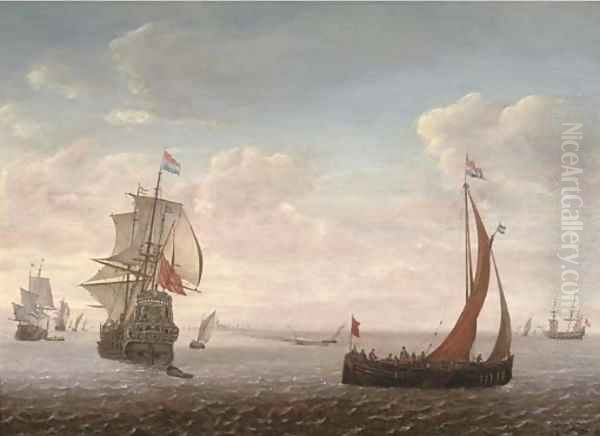
In his later years, Simon de Vlieger moved to Weesp, a town situated on the Vecht river, southeast of Amsterdam. It was here that he passed away in March 1653, buried on the 13th of that month. He was only in his early fifties, but had already produced a substantial body of work and made a lasting contribution to Dutch art.
His legacy is multifaceted. Art historically, he is recognized as a key innovator in marine painting. He successfully synthesized the atmospheric concerns of the tonal phase with a greater naturalism in color, light, and detail. His ability to render the subtle interplay of light on water and in the sky set a new standard for the genre. His compositions, whether depicting calm or storm, harbor or open sea, beach or estuary, were consistently well-structured and evocative.
Through his influential role as a teacher, particularly of Willem van de Velde the Younger, and his impact on contemporaries like Jan van de Capelle, De Vlieger's stylistic innovations were disseminated and became foundational for the subsequent development of marine painting not only in the Netherlands but also influencing the genre in England and elsewhere, especially after the Van de Veldes moved to London.
Today, Simon de Vlieger's paintings are held in major museums around the world, including the Rijksmuseum in Amsterdam, the National Gallery in London, the Louvre in Paris, and the Metropolitan Museum of Art in New York. They are appreciated for their technical mastery, their atmospheric beauty, and the window they provide onto the maritime world of the Dutch Golden Age. He remains a crucial figure for understanding the evolution of landscape and marine painting, celebrated for his sensitive observation of nature and his ability to translate the ephemeral qualities of light and water onto canvas. His work continues to captivate viewers with its blend of realism, atmosphere, and quiet poetry.